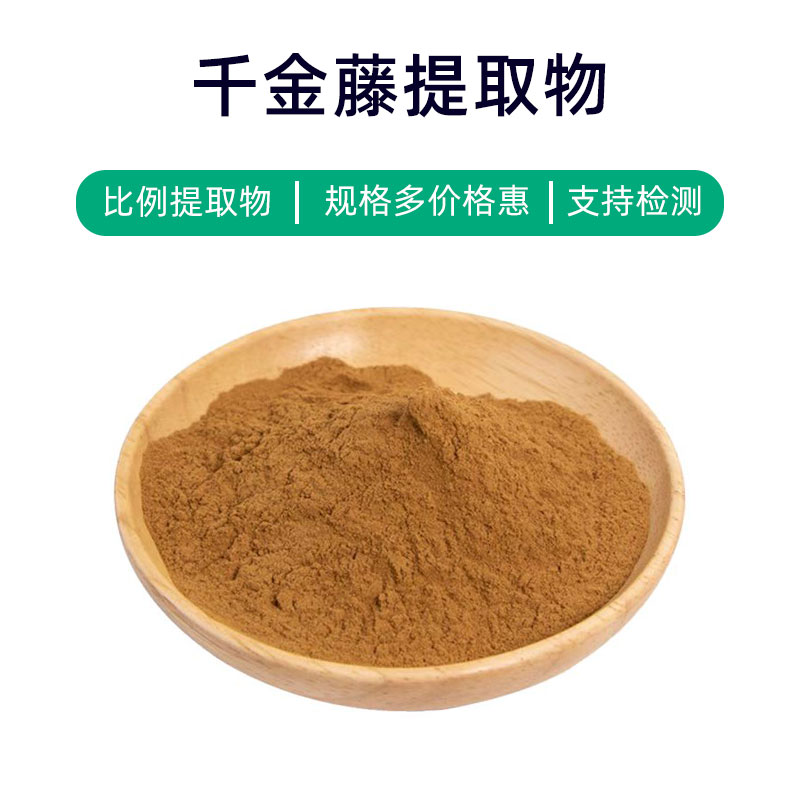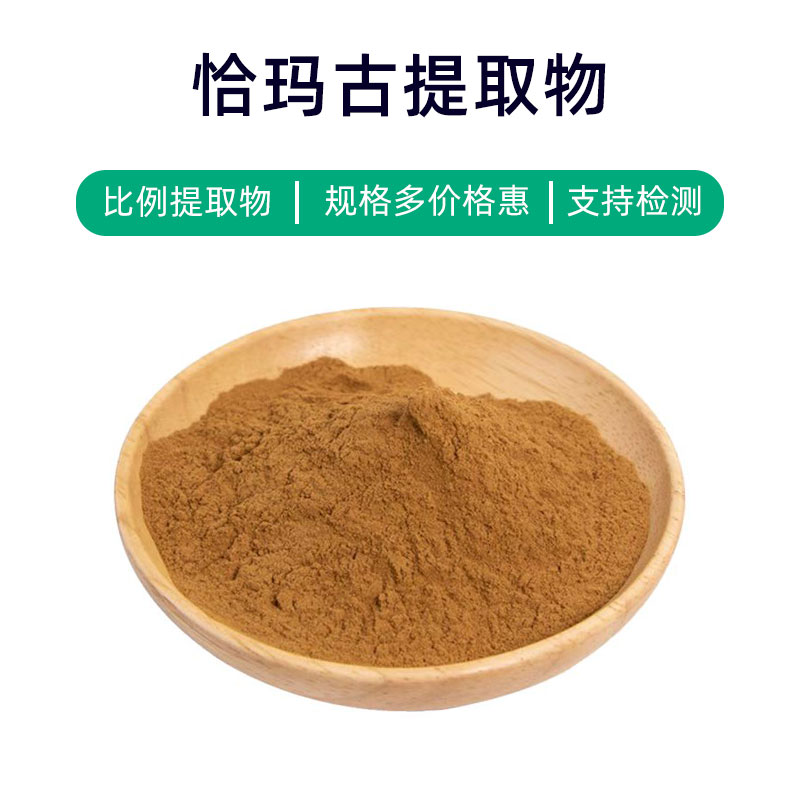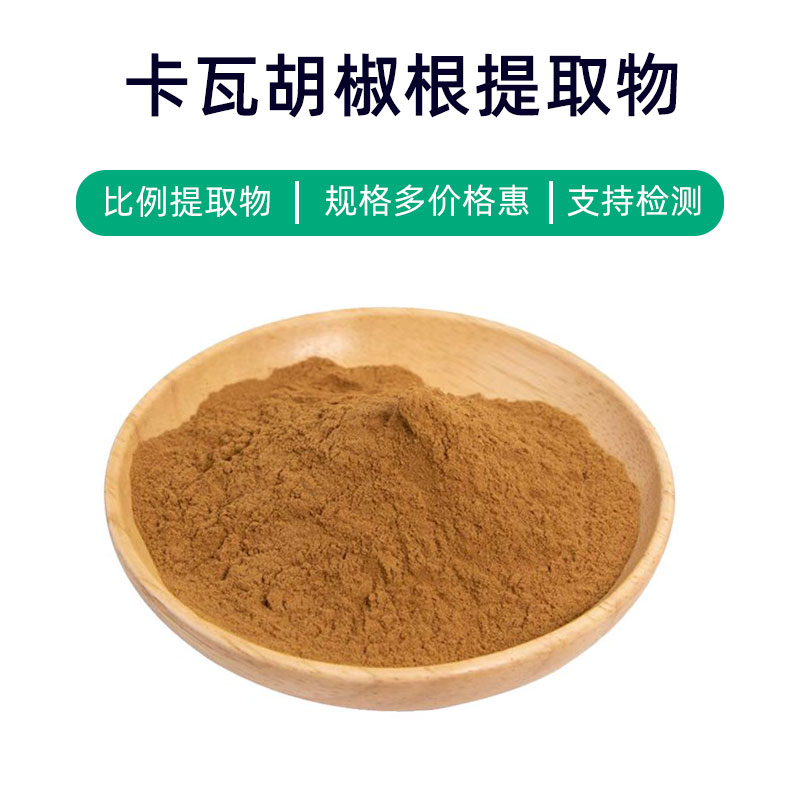Tibetan Rhododendron Extract Product Introduction
Tibetan Rhododendron extract is a natural plant extract derived from the Tibetan Rhododendron, primarily consisting of abundant flavonoids, tannins, and essential oils. These components give the extract numerous beneficial effects and applications.
Firstly, Tibetan Rhododendron extract is rich in flavonoids, which have strong antioxidant properties, helping to combat free radical damage, slow down the aging process of the skin, and maintain youthful, healthy skin.
Secondly, it also possesses soothing and anti-inflammatory effects, alleviating discomfort symptoms such as skin redness and itching, making it especially suitable for sensitive skin.
Additionally, the extract can moisturize and hydrate the skin, enhancing skin barrier function, preventing moisture loss, and keeping the skin soft and supple.
In the pharmaceutical field, Tibetan Rhododendron extract is commonly used to prepare drugs and health supplements that have antioxidant, anti-inflammatory, and soothing effects.
In cosmetics, it is widely used in skincare products, masks, lotions, and other items to improve skin texture, slow aging, and repair sensitive skin.
In summary, Tibetan Rhododendron extract serves as a natural plant extract with a variety of beneficial effects, applicable in both the medical and cosmetic fields, providing effective support for skin health and beauty.
Tibetan Rhododendron Extract Production Process
The production process of Tibetan Rhododendron extract typically includes the following key steps:
- Fresh Flower Collection: Firstly, fresh flowers should be collected during the flowering period. This is the best time for harvesting, as the flowers contain a higher concentration of active components.
- Washing and Treatment: The collected flowers are washed and treated to remove impurities and dirt, ensuring the cleanliness and safety of the material.
- Grinding and Crushing: The cleaned flowers are ground and crushed into a powder form, facilitating the subsequent extraction process.
- Solvent Extraction: Appropriate solvents (such as ethanol, ethyl acetate, etc.) are used to extract the active components from the crushed flowers by soaking them in the solvent.
- Filtration and Concentration: The extraction solution is filtered to remove impurities, yielding a solution containing the active components. Then, through evaporation or vacuum concentration, the solvent is removed, resulting in a concentrated extract.
- Drying: The concentrated extract is dried to remove residual moisture, ensuring the stability and quality of the extract.
- Refinement: The dried extract undergoes further refinement and processing to enhance the product’s purity and activity.
- Packaging and Storage: Finally, the refined Tibetan Rhododendron extract is packaged and stored, typically in sealed, moisture-proof, and light-proof containers to ensure product quality and stability.
Through these process steps, high-purity, high-activity Tibetan Rhododendron extract can be obtained, suitable for production and applications in the medical and cosmetic fields.
Tibetan Rhododendron Extract Effects and Side Effects
Tibetan Rhododendron extract is a valuable plant extract with various effects and functions, primarily including the following aspects:
- Antioxidant Effects: It contains abundant antioxidants, such as polyphenols and flavonoids, which effectively neutralize free radicals, slow down cellular aging, and protect cells from oxidative damage.
- Anti-Inflammatory Effects: Studies show that the active components in Tibetan Rhododendron extract have certain anti-inflammatory properties, inhibiting the release of inflammatory factors and relieving inflammatory responses, providing auxiliary treatment for inflammatory diseases.
- Antibacterial and Antiviral Properties: Some studies indicate that Tibetan Rhododendron extract has inhibitory effects on certain bacteria and viruses, helping to prevent and treat related infectious diseases.
- Immune Function Regulation: The active components can modulate immune system functions, enhancing the body's resistance and improving adaptability to external environments.
- Cardiovascular Protection: Research shows that Tibetan Rhododendron extract can lower blood pressure and lipids, improve blood circulation, offering protective effects on the cardiovascular system, helping to prevent cardiovascular diseases.
- Antidepressant Effects: Some studies suggest that the active components in Tibetan Rhododendron extract can stabilize emotions, aiding in alleviating depressive feelings and improving mental state.
- Skin Care: The extract also has skincare benefits, moisturizing the skin, regulating oil balance, slowing skin aging, and improving skin texture.
Despite the many benefits, individual differences and potential allergic reactions should be considered when using Tibetan Rhododendron extract. It is advisable for individuals with sensitive skin or specific health issues to conduct a skin test or consult a healthcare professional before use to avoid adverse reactions.
Overall, Tibetan Rhododendron extract, as a natural plant extract, has wide application prospects and can play important roles in medicine, health supplements, and cosmetics.
Tibetan Rhododendron Extract Application Scenarios and Dosage
As a precious plant extract, Tibetan Rhododendron extract has extensive applications in the fields of medicine, food, and cosmetics. Below are detailed introductions regarding its application scenarios, usage, and dosage in these areas:
- Applications in Medicine:
- Tibetan Rhododendron extract is used as a traditional Chinese medicine ingredient, commonly found in various traditional Chinese medicine formulations, such as Tibetan and Yunnan medicine.
- Usage: It is generally prepared as a decoction or used as a pharmaceutical ingredient for drug manufacturing.
- Dosage: The specific dosage should depend on the formulation and is usually recommended to be used under the guidance of a physician or herbalist.
- Applications in Food:
- Tibetan Rhododendron extract is often used as a food additive for flavoring or enhancing aroma.
- Usage: It can be directly added to foods, such as teas, pastries, and seasonings.
- Dosage: The amount added should be determined based on the type of product and desired flavor intensity, typically complying with food safety standards and production regulations.
- Applications in Cosmetics:
- Tibetan Rhododendron extract is common in skincare and beauty products, known for its moisturizing, antioxidant, and anti-aging properties.
- Usage: It can be added as an ingredient in creams, lotions, masks, and serums.
- Dosage: The specific quantity should be based on the product formula and effectiveness requirements, usually recommended within the range of 0.1%-5%.
In summary, Tibetan Rhododendron extract is primarily applied in medicine as a traditional herbal ingredient, with usage and dosage guided by medical professionals; in food, it is used as a food additive in accordance with safety standards; and in cosmetics, it is incorporated into skincare products with dosage tailored to specific formulas and effects. Users should be mindful of related regulations and standards to ensure safety and effectiveness.
Tibetan Rhododendron Source Plant Introduction, Distribution, and Growth Environment
Tibetan Rhododendron, scientifically known as Codonopsis pilosula (Franch.) Nannf., belongs to the Campanulaceae family. Below is detailed information about the source plant of Tibetan Rhododendron extract regarding its introduction, distribution, and growth environment:
- Plant Introduction:
Tibetan Rhododendron is a perennial herbaceous plant typically growing 30-150 cm tall. Its rhizome is thick, with short segments, and the stem is upright or inclined, with multiple branches. The leaves are oval or elongated, with short soft hairs on the surface, and wavy or serrated edges. Flowers are solitary at the leaf axils or atop stems, bell-shaped, purple-blue or yellow-green in color, blooming from late summer to autumn. - Distribution:
Tibetan Rhododendron is primarily distributed in western China, including Gansu, Qinghai, Tibet, Sichuan, and Yunnan. It usually grows in mountainous areas at altitudes between 1,500 and 4,000 meters, such as slopes, forest edges, meadows, ravines, and rocky terrains. - Growth Environment:
Tibetan Rhododendron thrives in sunny, humid environments with good drainage. It is not strict about soil requirements, tolerates cold and drought, and has strong adaptability. Its growth regions generally have a cold temperate and temperate monsoon climate, with cool summers and cold winters, experiencing adequate precipitation.
In the wild, Tibetan Rhododendron often grows on slopes, in rock crevices, along forest edges, or meadows, forming unique growth habits. Due to its special growing environment, careful attention must be paid to protecting wild resources and the environment when collecting and extracting Tibetan Rhododendron extract.
Overall, Tibetan Rhododendron is a precious medicinal plant widely distributed in western China, with good adaptability and favorable growth conditions.
Tibetan Rhododendron Extract Processing and Storage
The processing of Tibetan Rhododendron extract usually involves the following steps: first, mature Tibetan Rhododendron flowers are collected, then cleaned and air-dried or oven-dried. Next, the dried flowers are crushed or ground into a powder or granular extract. Finally, suitable extraction methods, such as water extraction, alcohol extraction, or supercritical fluid extraction, are employed to obtain the active components from the Tibetan Rhododendron.
In terms of storage, to maintain the stability and activity of the extract, it should typically be stored in a dry, cool, well-ventilated environment, avoiding direct sunlight and high temperatures. The extract should be kept in a sealed container to prevent moisture, dust, or odors from invading, thereby extending its shelf life and maintaining good quality.
Monica Sun is a seasoned expert in the plant extraction industry with over a decade of experience in research and production. She specializes in the extraction and purification of plant active ingredients, focusing on driving innovation in natural product applications. Monica has participated in the development of multiple functional plant extracts, delivering high-value natural raw material solutions for the health food, pharmaceutical, and dietary supplement sectors.


















